The outlet in the bathroom for the washing machine must be separate. Many masters do not recommend completely disconnecting the unit from the network, therefore, when planning the location of the points, this must be taken into account. The socket is placed behind the bathroom set if its back wall is open. This allows you to hide the wires coming from the washing machine. At all stages, the technology of the connection device must be observed. Its violation is dangerous, a fire hazard may occur.
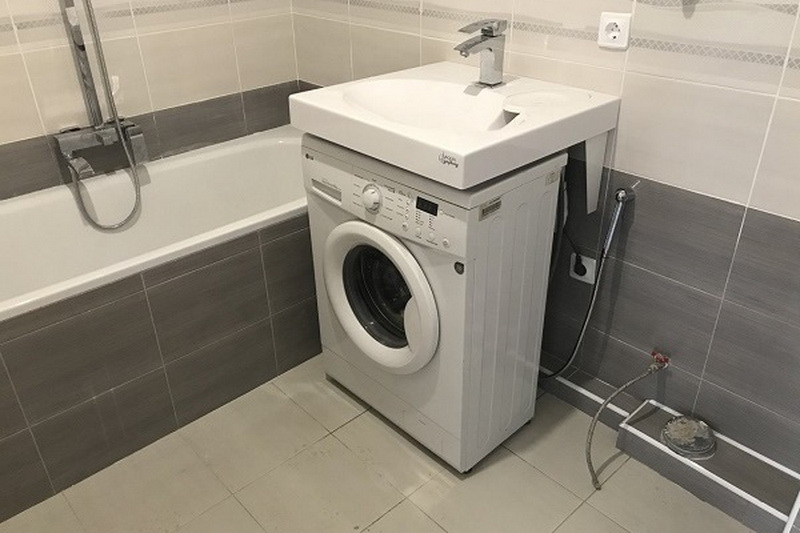
Attention! The device of the socket located in the bathroom must be taken seriously. If there are no skills in performing such work, it is better to entrust the matter to a professional.
Number of bathroom outlets
First you need to decide which devices can work constantly and simultaneously. You definitely need two waterproof sockets with a cover. They are provided for a washing machine and a heated towel rail. The degree of protection must be at least IP4.
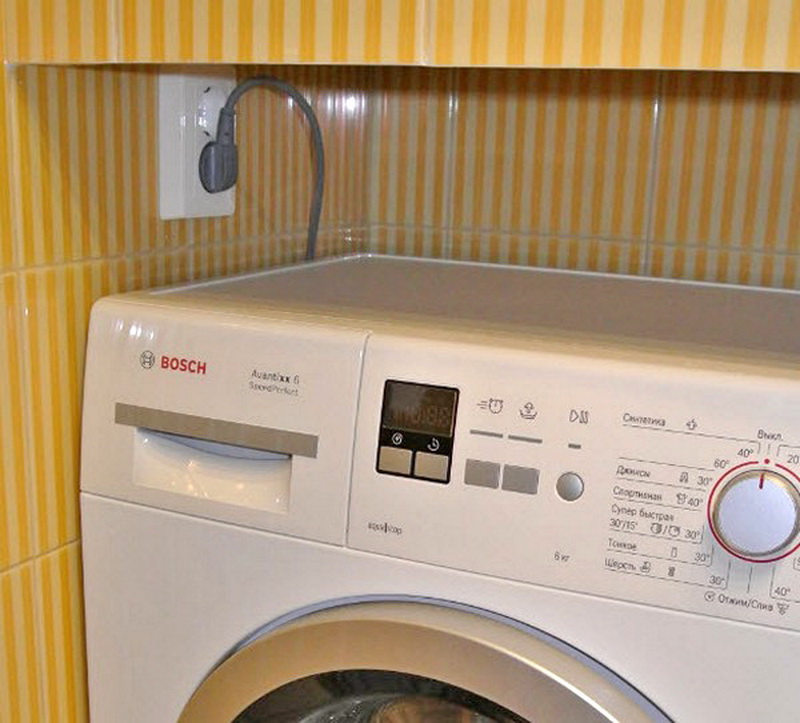
The points must be connected to the residual current device on the shield. If the bathroom needs a hot water tank, a regular outlet may not be enough. There is a risk of accidents. Such a powerful electrical appliance, it is better to connect directly using a cable outlet.Sockets for additional appliances, such as hair dryer, hair straightener and electric shaver, can be placed in drawers under the cabinet or in the middle of the cabinet. This will hide the hanging wires.
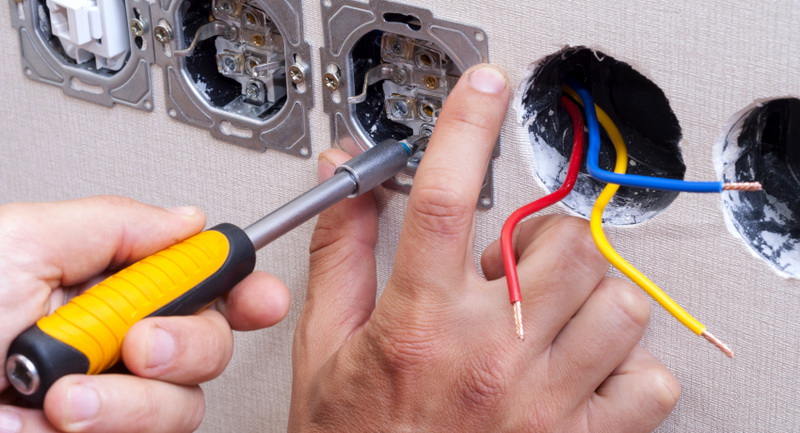
Secure connection
Before installing the machine in the bathroom, you need to make sure that the wiring is functioning flawlessly and is safe. The line supplying the socket to the device is equipped with a toggle switch and a protective device. These are the key rules for the full functioning of units with increased energy consumption in rooms with high humidity.
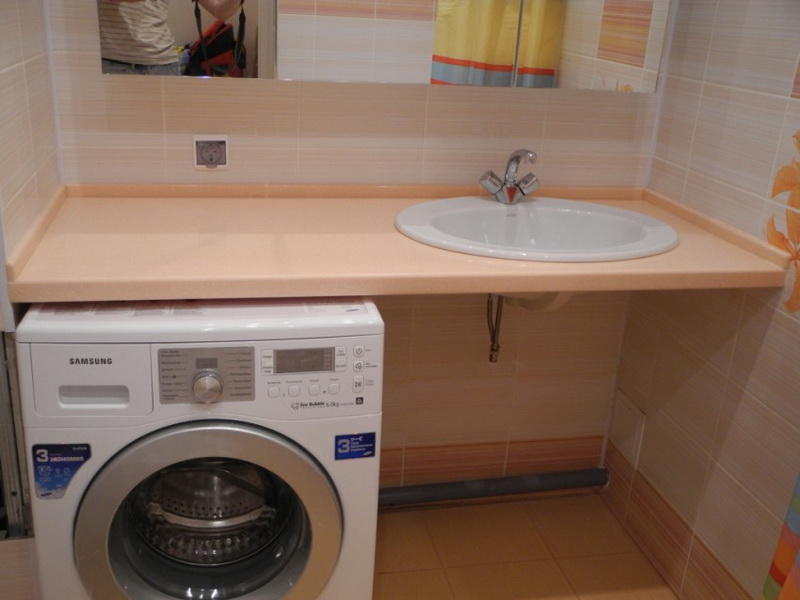
Cable cross section and power line: requirements
A separate power supply line is connected to the unit installed for connecting the washing unit. This is due to the high energy consumption at the time of heating the water with the heating element of the device. This figure is 2.5 kW, but in older washing machines it can reach 4 or more kW of electricity.
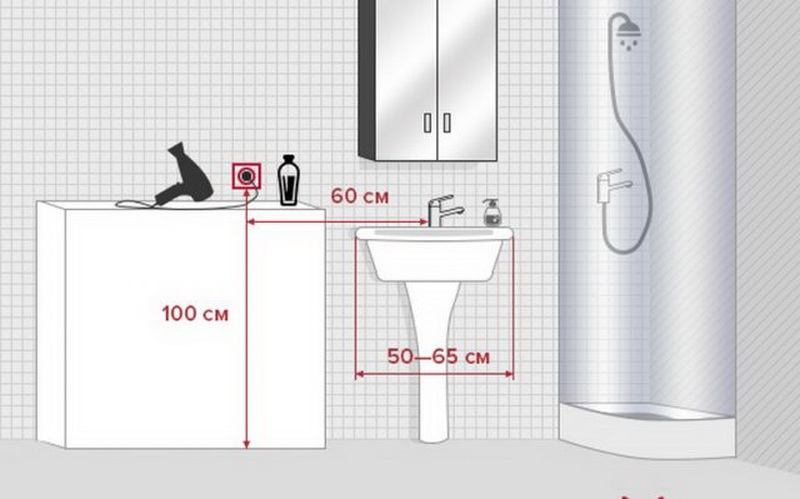
In addition to the volume of energy consumption, it is necessary to take into account the cross-sectional dimensions of the wire used. When calculating, it must be taken into account that for 4 kW of power it is necessary to lay a cable with copper conductors with a cross section of at least 2.5 mm. For higher consumption, a powerful cable is needed, that is, reinforced.
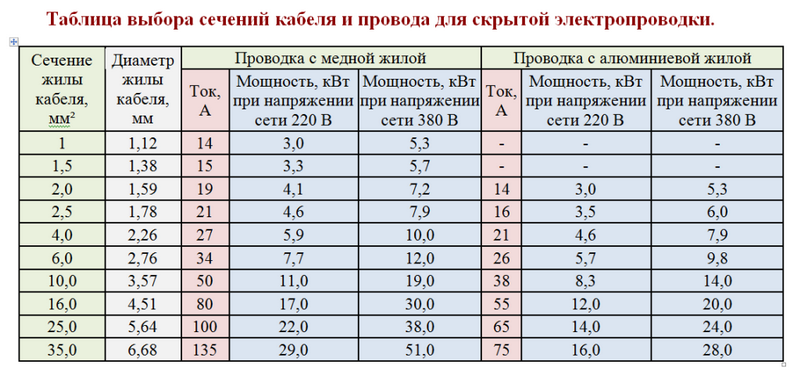
But, most often in bathrooms, appliances are used for which a cross section of 2.5 mm is sufficient. They provide a current supply of not more than 16 amperes. Under these indicators, an automatic machine is equipped on the line (with the same volume). It is unreasonable to use a stronger section, because its cores may not fit into a standard outlet. In such cases, the device must be connected directly to the machine.
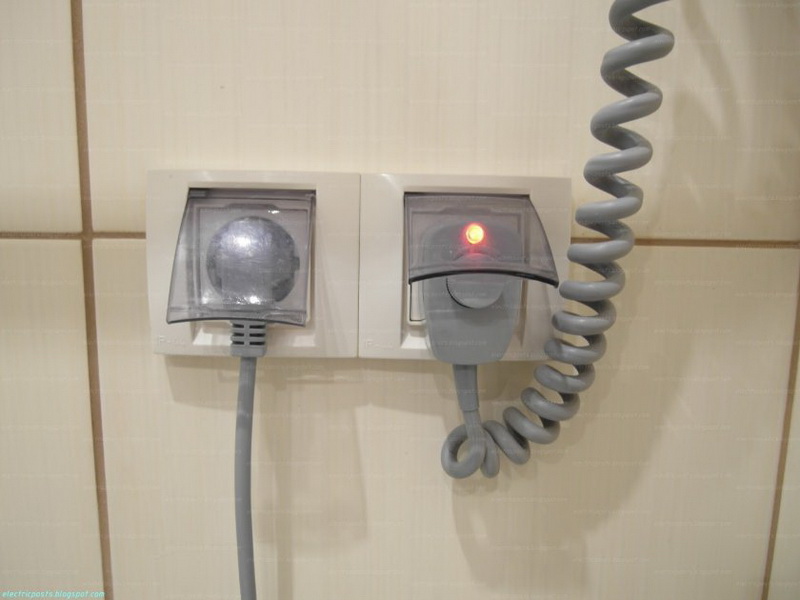
At the start of the line, not far from the switchboard, a protection device is installed.The operating current of this unit should be no more than 30 mA. The most suitable is only 10 mA. Instead of an RCD, you can use a differentiated machine for 16 amperes. This ensures complete protection against electric shock when touching the housing of installed units in the event of a current leakage.
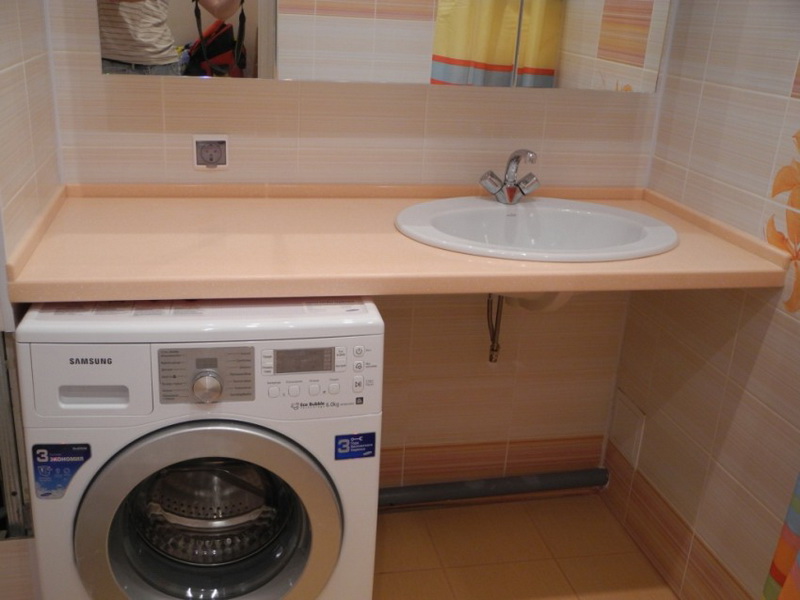
The above schemes are implemented in private homes, where the laying of additional lines does not cause difficulties. Boards with outdated equipment have been installed in old high-rise buildings with common front doors. In such cases, it is very difficult to install the machine, and it is almost impossible to connect the ground. It is not recommended to perform such work on your own, it is better to consult an electrician.
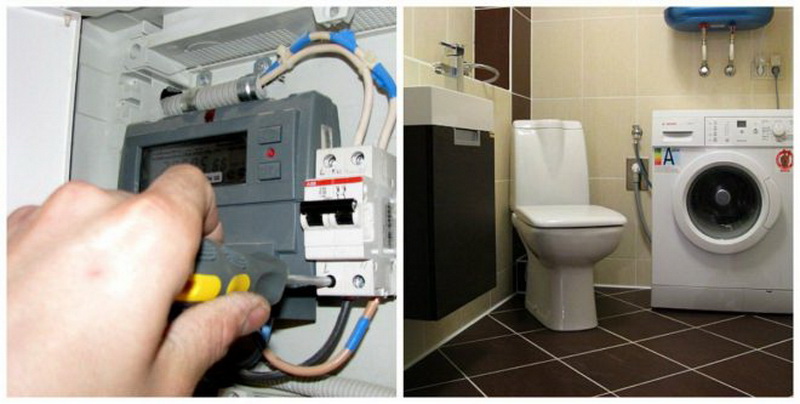
Attention! Old buildings used old aluminum cables. They are not designed to transmit electricity in the volumes needed for machines.
Socket Compliance Criteria
The marking, containing the Latin letters IP and two numbers, characterizes the ability of the outlet to withstand exposure. The first number reflects the dust resistance rating of the assembly, and is often omitted, denoted as 0. The second number applies to the degree of protection against moisture.
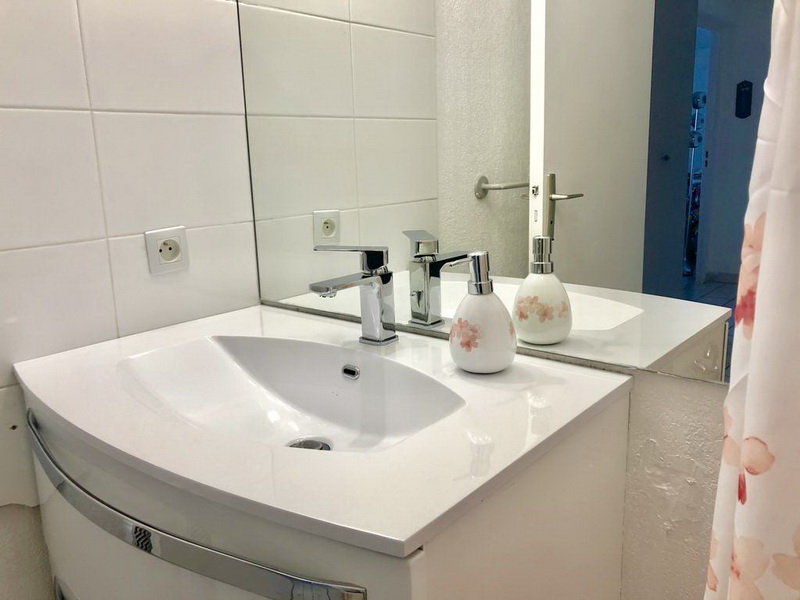
Zero group with the most minimal security. For installation in a standard bathroom with average humidity, it is allowed to use devices of class IP 4. This designation indicates that the product is protected from moisture.

Outlets in the bathroom should be equipped with spring-loaded caps. When not in use, this element should cover the inside and prevent holes and contacts from getting wet.
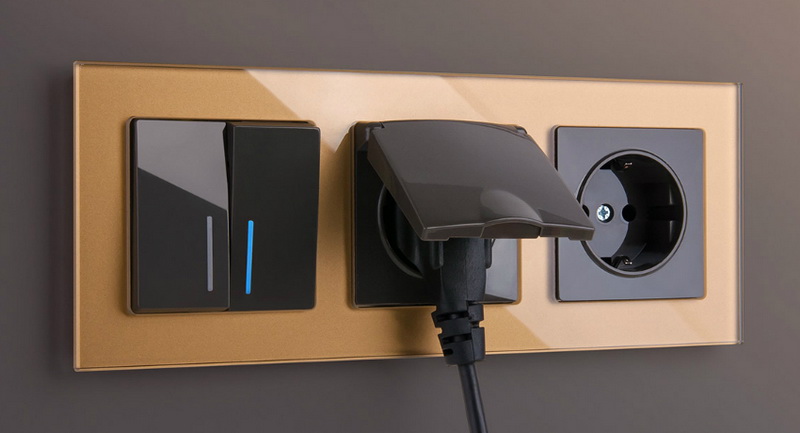
How to determine the installation location
Of course, installing a power connection in high humidity conditions requires caution. It is important to zone the room.After all, it is intuitively clear that it is not worth placing the node near the shower, bath tub and washbasin, because this can lead to trouble.
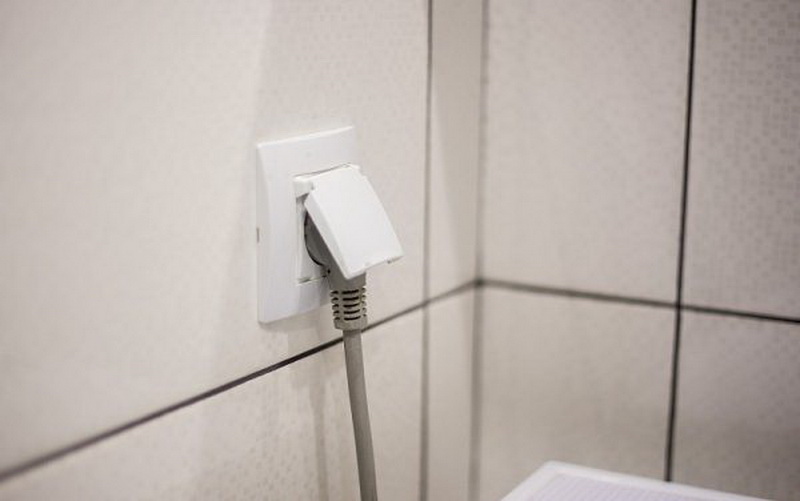
The regulations regulate the division of the restroom into several foci:
- Class zero electrical safety includes areas inside and in the vicinity of splashes and water. Plots of the first class include zones above and below the 0 area.
- The second security group is located remotely, within 50 cm from the boundaries of zone 1.
- The third zone is all sites at a distance of 2.5 m from area 2.

According to the requirements of the regulations, sockets are placed no closer than 2.5 m from the source of moisture, that is, in the third zone. These rules are often neglected. And this is not due to the negligence of the owners. Bathrooms in Soviet-era buildings are very small and rarely exceed 2.5 meters in length.
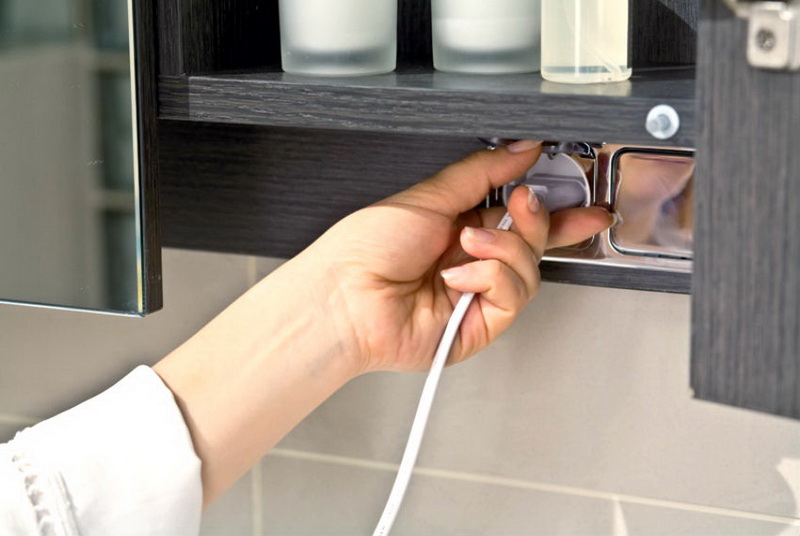
Attention! It is impossible to ignore fire safety rules. It is better to find a place to place in the kitchen.
When placing the wiring, keep in mind that condensation will appear intensively on the wall located near the stairwell. At the same time, closer to the floor, there will be more of it. The wall will be constantly damp. For the same reasons, it is impossible to carry out a knot under the sink.
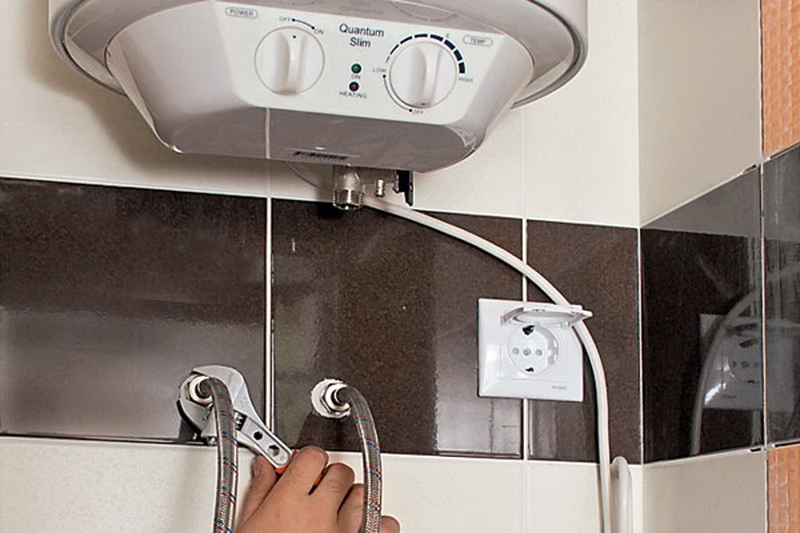
The most dangerous thing is that moisture appears not only on the surface (near the outer part of the outlet), but also inside the concrete block. That is why the installation height is not less than 1.3 m.
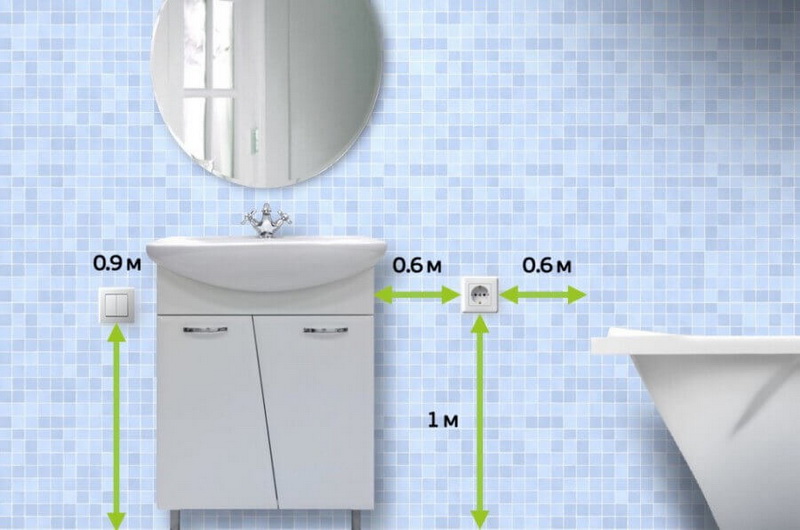
It is important to observe another rule during installation - this is ease of use. How much space should be available for access is determined by the user. The main thing is to have free access. Accordingly, you should not place nodes in hard-to-reach places, otherwise, in the event of a fire or a short circuit, it will be problematic to get to the source.
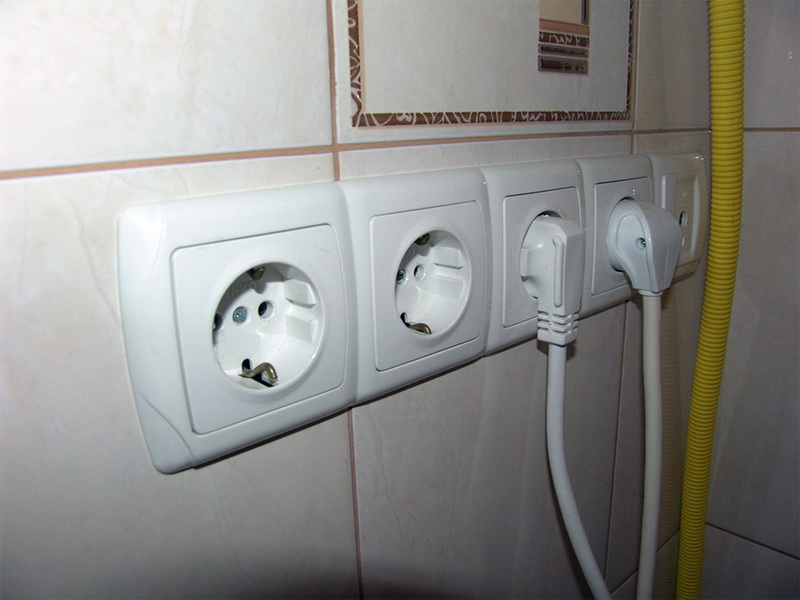
Device nuances
Waterproof socket, installed according to the same algorithm as a conventional product. If the socket in the room was not previously installed, you need to lay new wiring from the electrical panel and install an additional machine. Next, the cable is determined in accordance with the calculation of the current strength. The rating of the machine must be higher than the rating of the RCD.
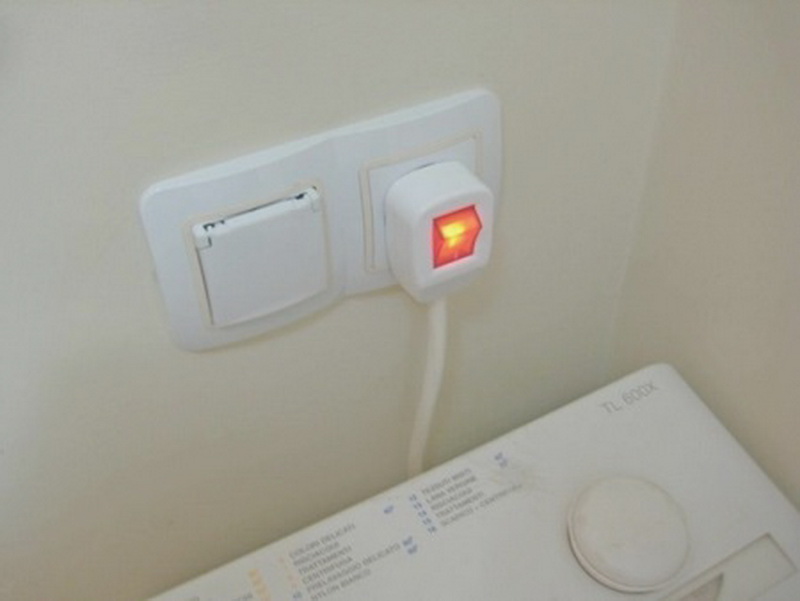
The wire is defined as three-core, including one of the cores is connected to ground. It is dyed yellow or green. The place for installation is determined by the fire safety regulations.The socket itself is placed in a special box (to avoid contact with wall materials).
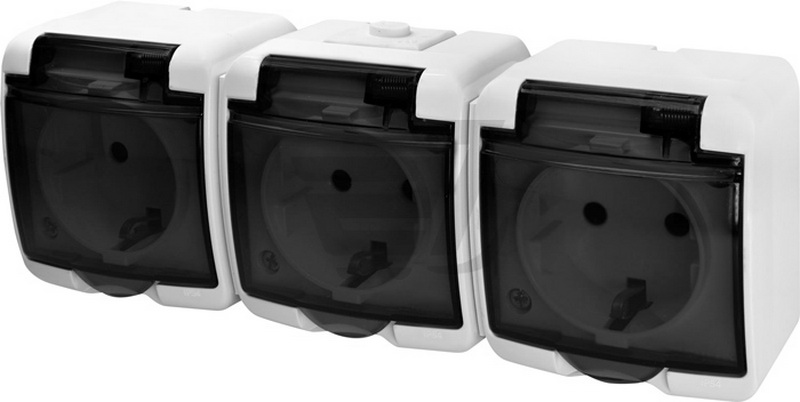
A non-combustible dielectric gasket is laid between the assembly and the box. If an additional outlet is needed if there are nodes in the room, a different scheme is applied. If the bathroom is old, the wiring is worn out, you need to make a strobe and lay a separate wire to the location of the new node.
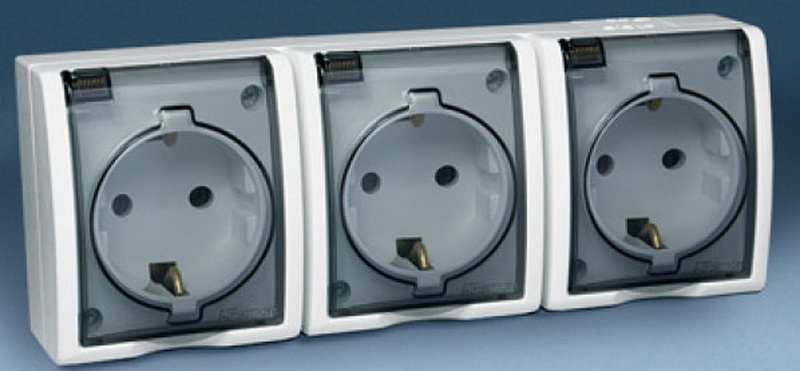
At the same time, an RCD is installed, as in the first case. The socket must not be connected to the old one, due to the lack of cross-section data. You can install two new sockets and connect them to a common box, but you must follow the rules of tightness and isolation devices between them.
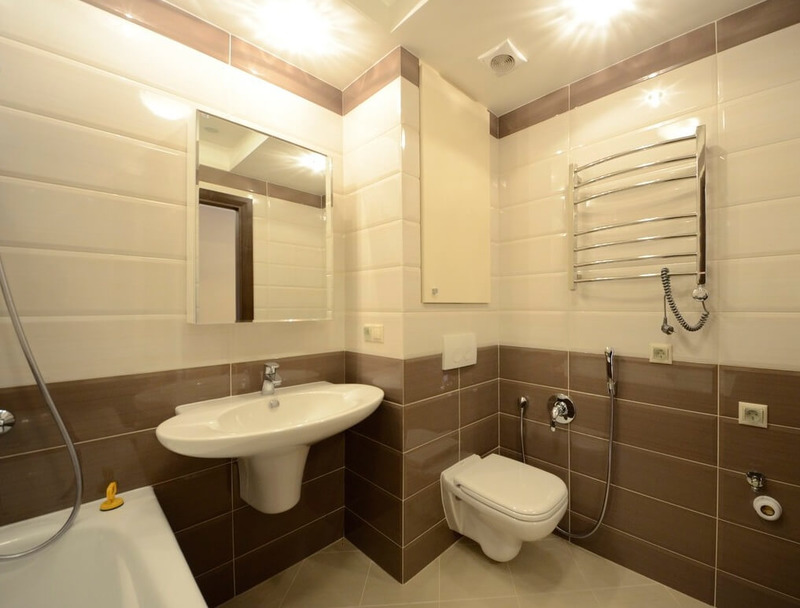
Primary requirements
In the houses of old buildings, there are no sockets in the bathrooms for objective reasons. There are no grounding systems in such buildings, and at the time of construction of these structures, there were no household appliances that consume a lot of electricity and were designed to be placed in bathrooms.
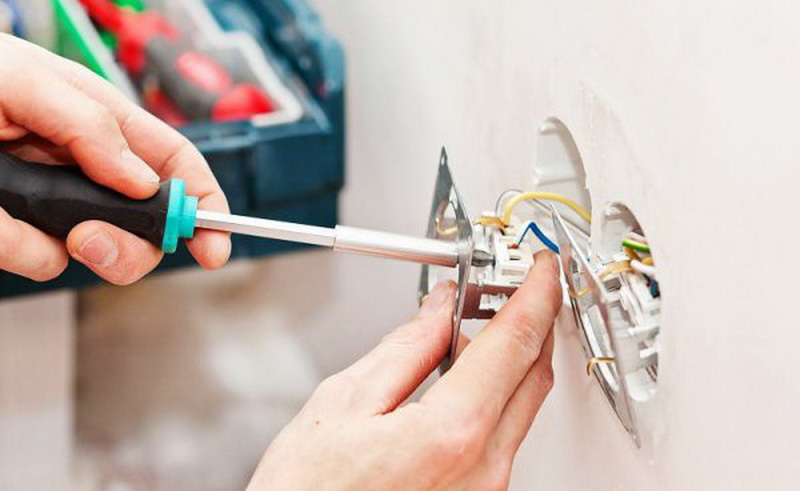
Modern automatic machines can work in conditions of high humidity, but subject to the norms and standards for the installation of power supply units.The list of rules includes:
- Connection of household appliances can be carried out only when using wiring from a 3-core copper cable. To do this, you need to completely reconnect the system in the boxes.
- During installation, sockets are used, the body of which is not susceptible to moisture.
- Electrical equipment must be equipped with a toggle switch that provides disconnection with a response limit of 10 mA. The power line must be grounded.
- Powerful equipment may only be connected via a protected contact.
- When installing a socket in the bathroom, it must be remembered that grounding is the main condition when installing a power point in bathtubs and a combined hygienic unit.
- If grounding is not provided for in the building, the damping of excess currents is provided by a protective transformer.The level of protection for devices is lower.
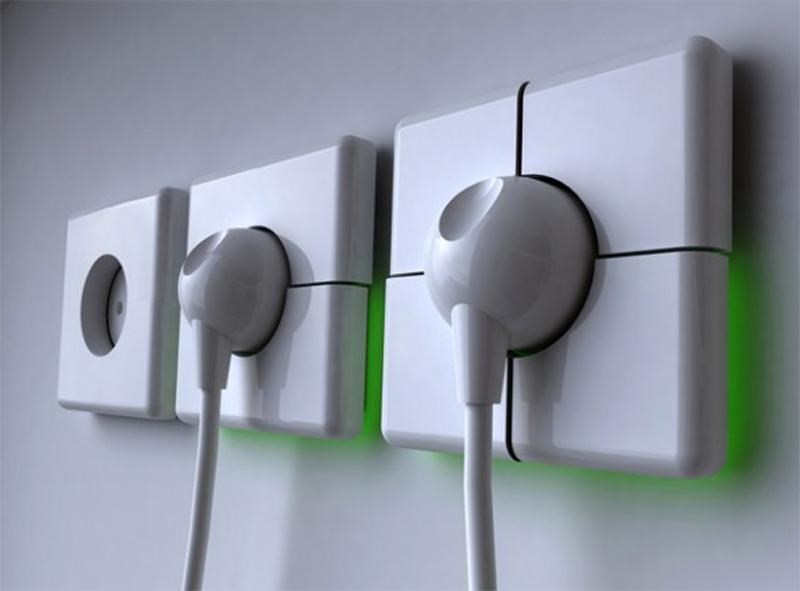
Many owners are negligent when connecting massive household appliances, using carriers and tees for this purpose. It is strictly forbidden to perform such manipulation with the machine. This is at least inconvenient and at the maximum dangerous. If the connection is not made correctly, the risk of an accident and a short circuit increases. Because of this, even expensive equipment protected by the manufacturer breaks down.
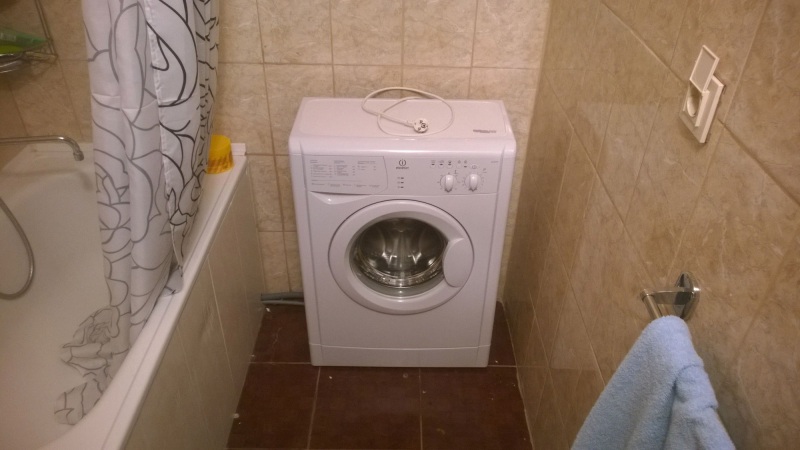
The following video will tell you how to properly connect the outlet in the bathroom.
What to do in case of breakdown
Disturbances in the operation of the outlet appear immediately visually. They are noticeable and are accompanied by a characteristic smell of plastic and sparks inside the case. That is, when the appliance plug is inserted into the socket, a spark is noticeable. This is manifested due to poor contacts in the connection of structural elements.If the problem is not eliminated in a timely manner, sparking will lead to the melting of the insulation of the conductors, then the case itself and the plug included in it will melt.
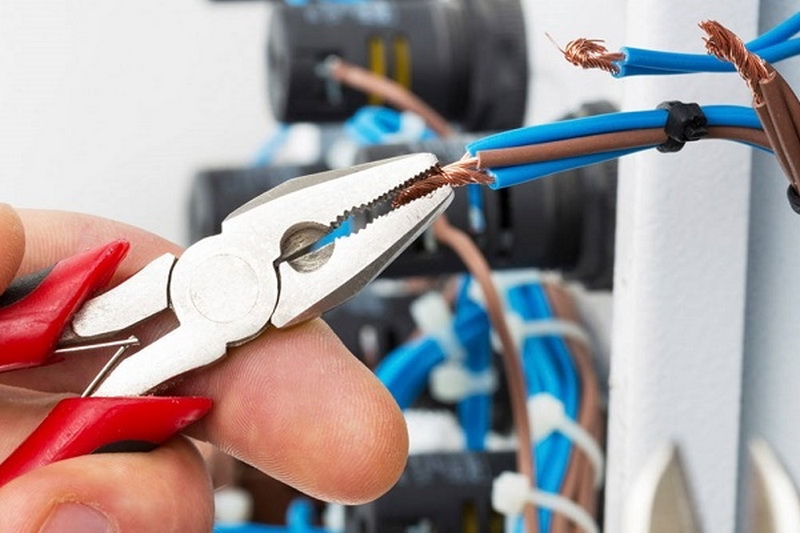
Attention! If access to the outlet is difficult, it is very difficult to control and timely identify a malfunction. If the unit is not additionally equipped with a circuit breaker, the risk of fire is very high.
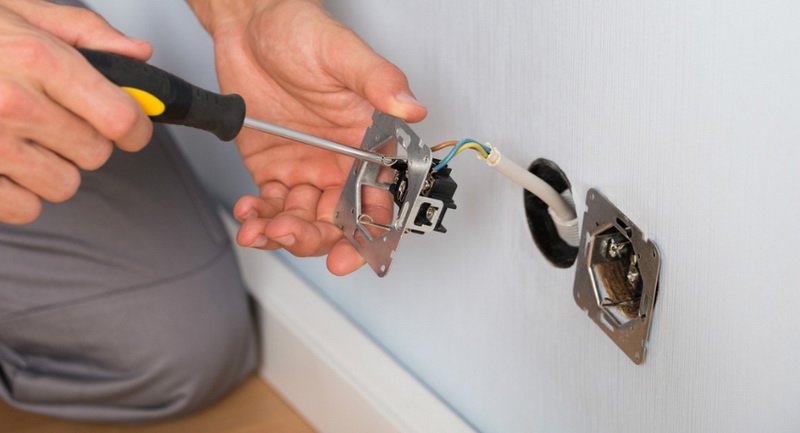
The outlet in the bathroom melted: what to do
If signs of melting are visually detected, you must immediately turn off the power going to the node. To do this, use a circuit breaker.
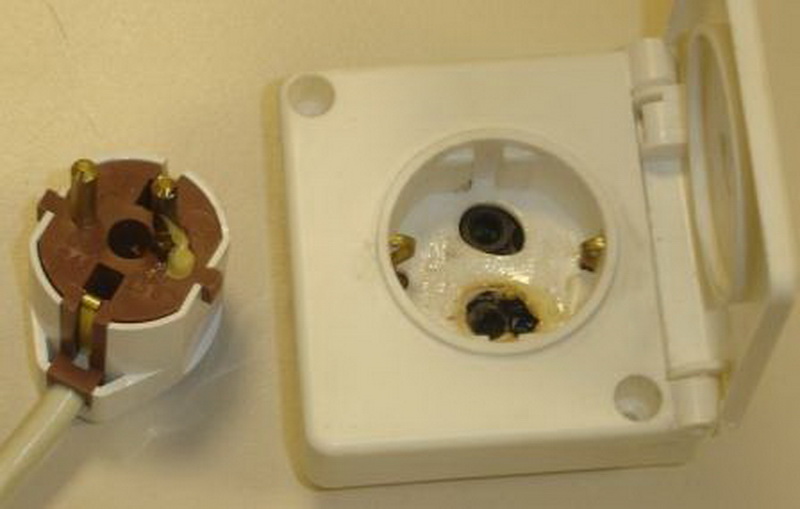
After the socket is de-energized, the included plug is removed from it. If it has melted to the outlet housing, the cord must be cut off. It is perfectly safe if there is no current flowing to the cable. This situation is quite rare, most often the problem is noticed earlier.
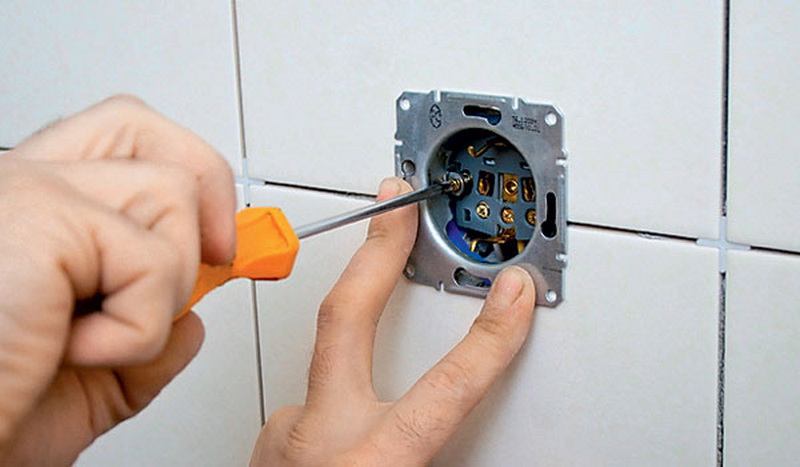
The socket is disconnected from the wall and the power wires are disconnected, a new one is installed, all connections are checked.If the wires are in good condition and their length allows you to connect a new outlet, this is very easy to do. But, if the situation is different, it is necessary to replace the entire supply phase.

How to prevent problems
The socket in the bathroom is a danger to residents, but its use is most often a necessity in today's realities. A lot of household appliances are placed in the bathrooms: from simple heated towel rails that consume almost no electricity to water-heating tanks.
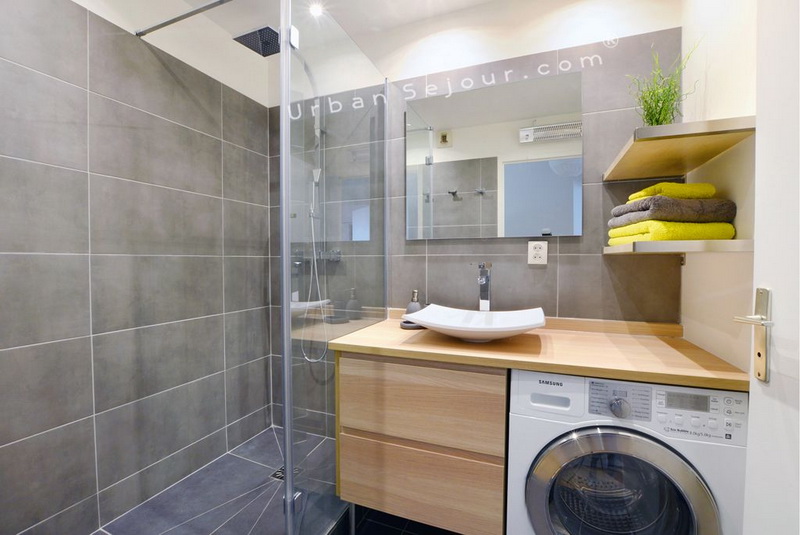
You can insure against troubles due to pyrostickers. So, electricians call fire extinguishing plates. They are presented in the form of stickers having a small size.Each plate contains a powder that, when heated, releases an odorless gas that stops the combustion process. The only drawback is the high cost. But, sometimes it is better to pay for convenience, comfort and safety. The use of pyrostickers will help to avoid the troubles associated with the malfunction of sockets and even household appliances.
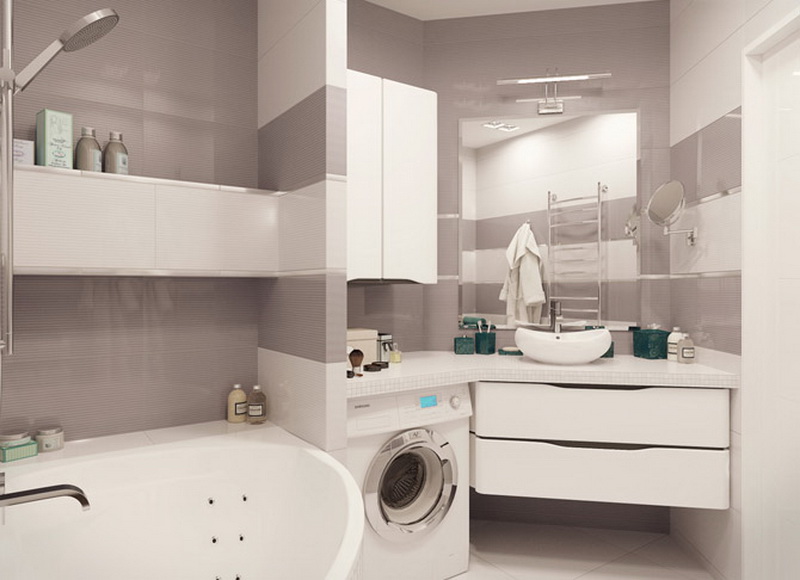
Installing an outlet for a washing machine in a bathroom is complicated by the specifics of the room. This room is quite humid, so all safety standards must be taken into account. In addition, the device - an automatic machine, consumes a lot of electricity, respectively, the old wiring may not withstand such a load. The correct location of the node is not closer than 2.5 m from the source of moisture, and not less than 1.3 m from the floor. If you can’t withstand these conditions, you need to look for another place to connect the machine, outside the bathroom.
Useful video tutorials:
